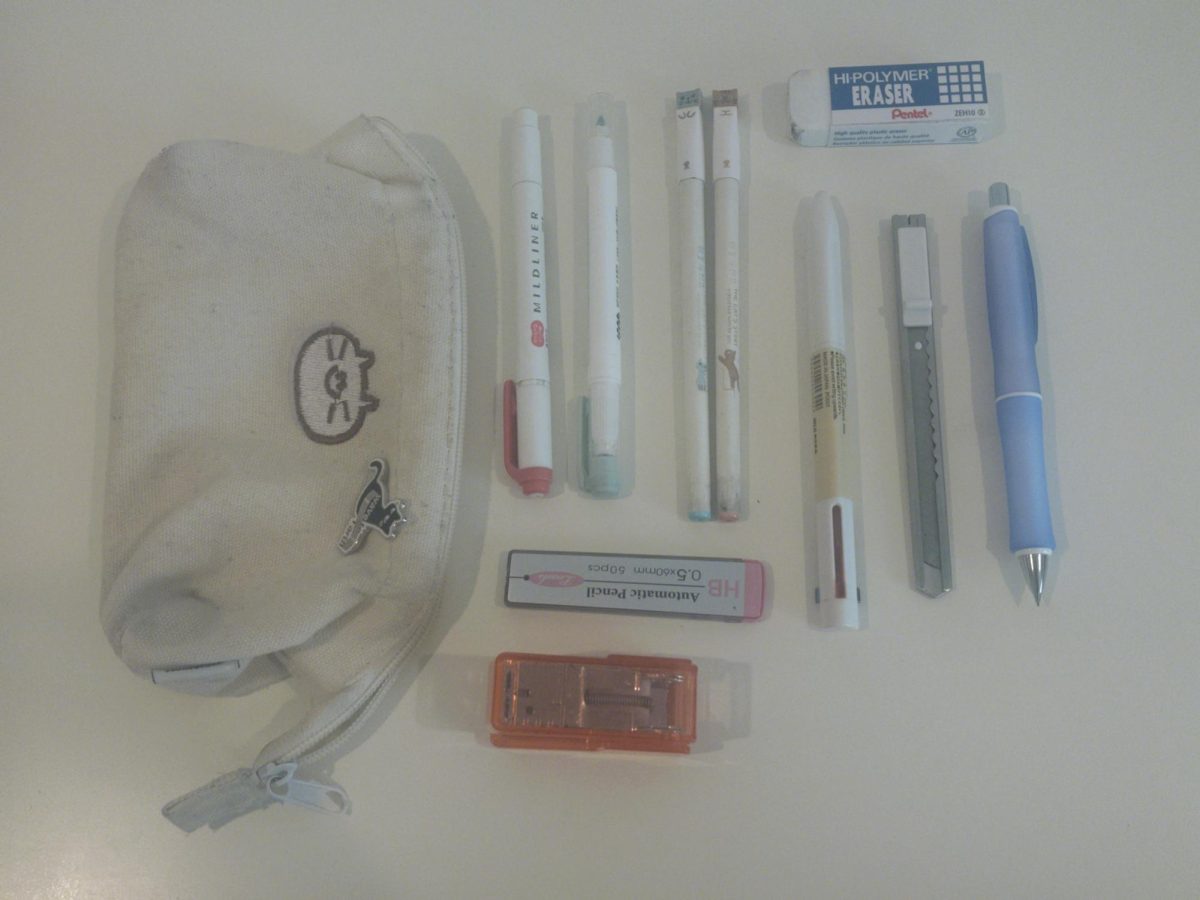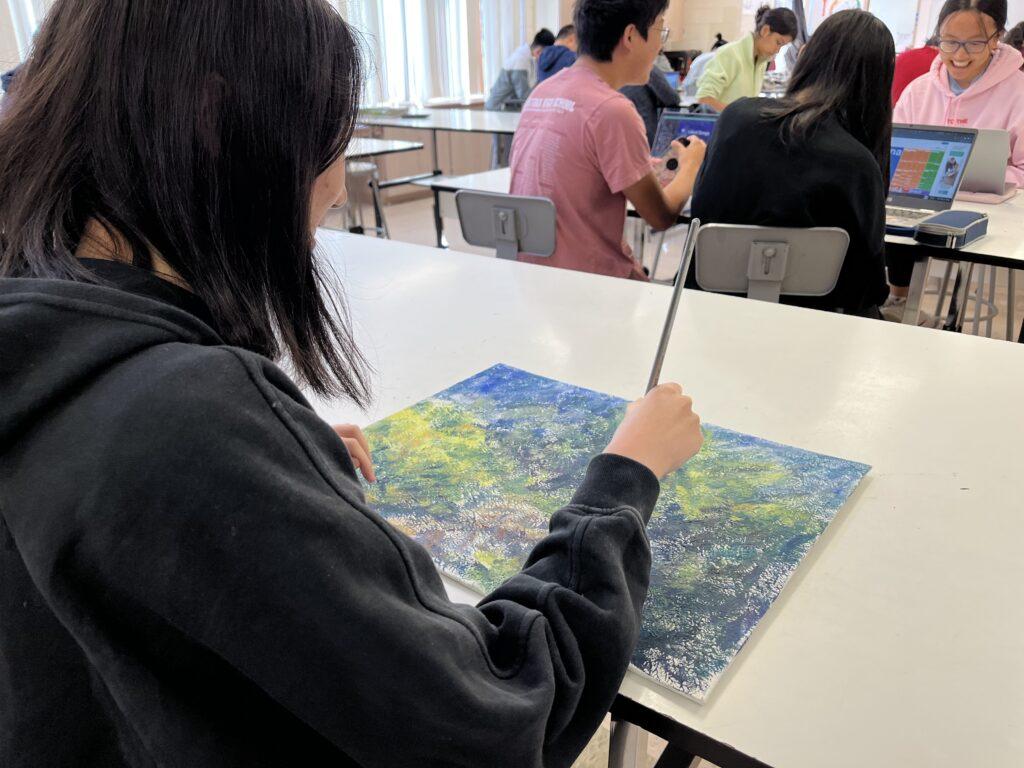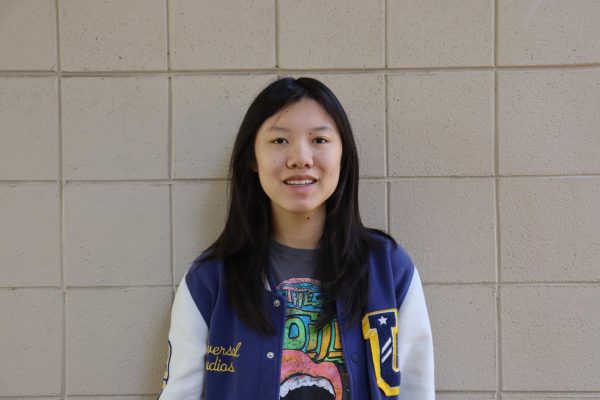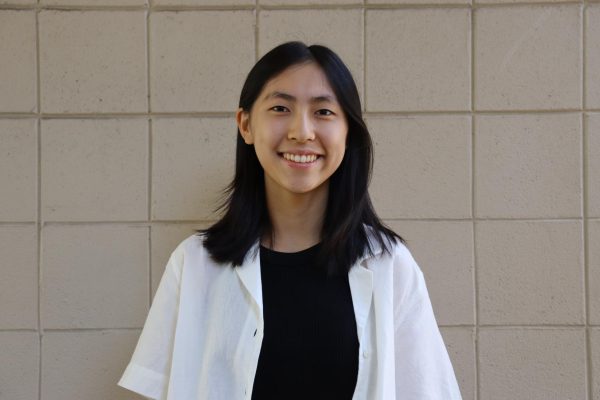Walking into room 202 on any given day, visitors hear soft music in the background as students engage in quiet chatter. Easels line the back wall, lit up by strings of fairy lights. Sinks are surrounded by cups of paintbrushes ready to be used by the various artists in the classroom. Students work on their individual pieces as the clock ticks by, lost in their creativity.
Among those working in the room this year are a small number of students in two new art classes: AP 2D, taught by art teacher Joel Tarbox, and 3D Design, taught by new ceramics teacher Nikki Dully. The classes were added alongside the already existing AP Drawing class.
Due to a lack of initial enrollment last January and February, the school cut back the number of periods, combining different classes into one. Since then, several more students added one of the classes, and the total class size exploded. Now the two art teachers have full classes filled with students of varying levels.
In period 4, having 29 students in four different courses (Art 3, Art 4H, AP 2D Design, AP 3D Design) has brought complications, Tarbox said.
“It makes the schedule tighter,” Tarbox said. “There’s something that’s going on with electives that, due to people not choosing our classes, the administration cuts it back. But then after the schedule changes, the students get put into their second choice and the classes expand, so that’s a challenge.”
The already existing AP Drawing curriculum explores beyond the typical realm of drawing through the use of multiple different mediums. The main goal of the class is for students to complete two portfolios, Selected Works and Sustained Investigation, by the end of the year.
Selected Works consists of five art pieces that students consider to be their best work. Sustained Investigation is a set of works that demonstrates a particular concept or idea and shows growth over the course of the year from the artist.
For example, junior Anushka Tadikonda’s Sustained Investigation focuses on the multifaceted experience of women. She recently finished a painting about how the justice system in India oppresses women. In addition, Tadikonda is working on another piece titled “How Much Cloth is Enough?” that addresses sexual assault along with the Iranian women protests.
Tarbox sees his role in the class as being a guide to his students.
“It’s all their choice,” Tarbox said. “But my role here is to talk to them, ask them questions, you know, give them critiques on the work and encourage them to keep on going.”
On the other hand, AP 2D Design encompasses a wider variety of mediums and is not limited to drawing, painting, or printmaking, instead using mediums such as photography, graphic design, and fashion illustration.
Senior Kayla Jung said she sees AP 2D Design as a class that was made to accommodate people with artistic interests outside traditional art. It’s a class that allows experimentation with graphic and fashion design and does not have such an emphasis on realistic rendering, which allows for more of a stylistic approach to artworks.
“For me, I would say that it allowed me to be a bit more experimental when it came to style due to my worry of realism in AP Drawing, compared to the styles and materials I used,” Jung said.
AP 3D design, taught by Dully, focuses on creating art through varying materials. The class allows the students to use any form of 3D art, whether it be through ceramics or textile work.
As a new class being offered this year, AP 3D design faces the same challenges with enrollment as AP 2D Design. AP 3D Design currently has only three students and is combined with 61 Ceramics 1-3 students during periods 3 and 5.
Ceramics is a required prerequisite for AP 3D Design. Many of the skills that students acquire during the first few years are then showcased into a collection of work in this final stage.
“It’s all about visualizing what you intend to create with your piece, and then taking each step to make sure that each part of your process is happening to get you to that end goal,” Dully said.
The class provides a wide variety of materials for students most of the time, and like the AP 2D Design and AP Drawing classes, students get full reign of their projects.
“I like the freedom because once you know how to do everything in ceramics, you know how to make things out of different mediums for 3D stuff,” said senior Emily O’Reilly, a student in AP 3D Design art. “You basically just get to experiment a lot, which is a really good thing to have in an art class.”
These classes allow students to think about the world around them and reconstruct it through art. They also build confidence in students to make something that is entirely their own.
Both Tarbox and Dully hope to see continued and increased interest and enrollment in the future, and also hope for more class periods to accommodate the numbers that eventually show up on their rosters.
“Since this is the first year it’s being held, I think students are still figuring out what it’s about,” Dully said. “But I would definitely emphasize the importance of creative freedom that the students have and a dedicated work time to just build their portfolio that they can then use to submit to art school or galleries.”






























